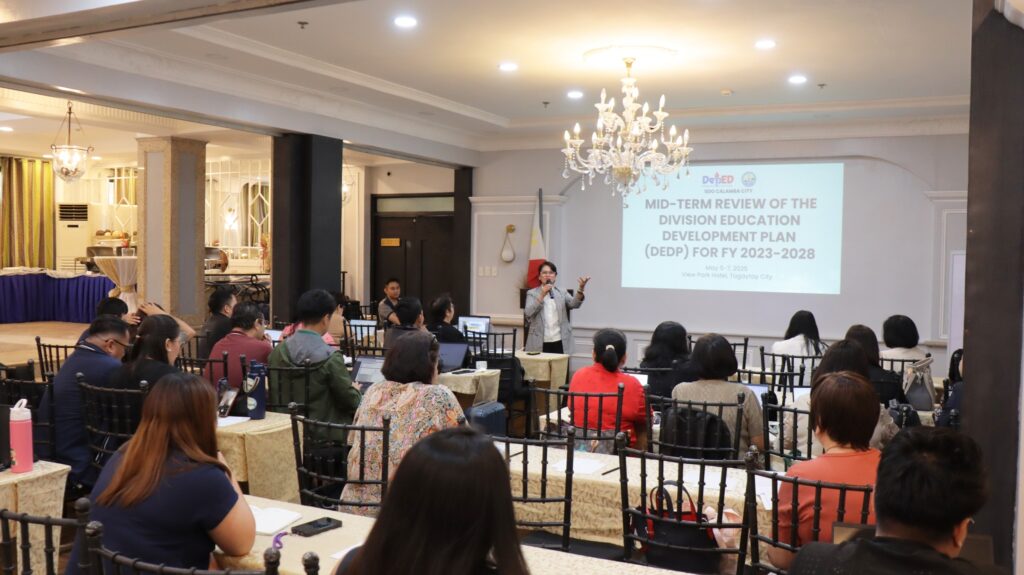
To ensure alignment with the DepEd’s priorities under Secretary Sonny Angara and the Basic Education Development Plan 2030, the Schools Division Office of Calamba City commenced the midterm review of its Division Education Development Plan (DEDP) for Fiscal Year 2022–2028 at View Park Hotel, Tagaytay City on May 5–7, 2025.
In her message, SDS Merthel M. Evardome, CESO V, emphasized the importance of aligning the division’s plans with Angara’s five-point education agenda, which supersedes the MATATAG Curriculum.
She also stressed that the updated DEDP should reflect the priorities and organizational goals outlined in BEDP 2030, including key outcomes, major final outputs, performance indicators, student-classroom ratios, and number of personnel and teachers trained.
SDS Evardome pointed out that while several Programs, Projects, and Activities have already been implemented by the different functional divisions, these initiatives have yet to be reflected in the adjusted DEDP.
“The updated DEDP must be anchored on baseline data and reflective of the actual conditions in our schools,” she remarked. “It is not merely about the number of programs, but their strategic consolidation and the quality of implementation. Similar initiatives should be merged into one comprehensive program that addresses multiple needs.”
SDS Evardome also underscored the need for every PPA to be accompanied by a clear Monitoring and Evaluation plan, a detailed implementation plan, and appropriate monitoring tools. She further urged division personnel to conduct site visits to schools to identify critical areas of concern and ground the planning process in reality.
Planning Officer III Ligaya G. Martir presented the Division’s educational data, highlighting issues and challenges in Access and Enabling Mechanisms such as low net enrolment rate, high school leaver and repetition rates, class shifting, and low completion rate.
Martir also discussed concerns related to teacher demographics including age and years of experience, subject-teacher mismatches, position classifications, and existing planning parameters. Additionally, she outlined the BEDP targets related to improving education quality.
SEPS Dexter M. Palanas discussed the milestones of the Division’s banner program from DREAM to DREAMS, elaborating on its framework. He also presented the indicative targets and status of various priority development areas, namely Access, Equity, Quality, Well-being and Resilience, and Governance.
SDS Evardome outlined specific strategies to address the identified challenges, providing sample PPAs along with potential outputs that may be incorporated into the revised DEDP.
Meanwhile, PDO II Evelyn Relor and EPS II Jose Chua Jr., both from the Policy and Planning Service–Policy Research and Development Division, led the discussion on the evaluation process. They also presented the core processes of the Basic Education Monitoring and Evaluation Framework.
The last part of the session focused on initiating an evaluation, including the requirements, evaluability assessment, evaluator selection, stakeholder engagement, evaluation design and objectives, appropriate methodologies, risk identification and assessment, as well as the financial and human resource considerations needed for effective implementation.
